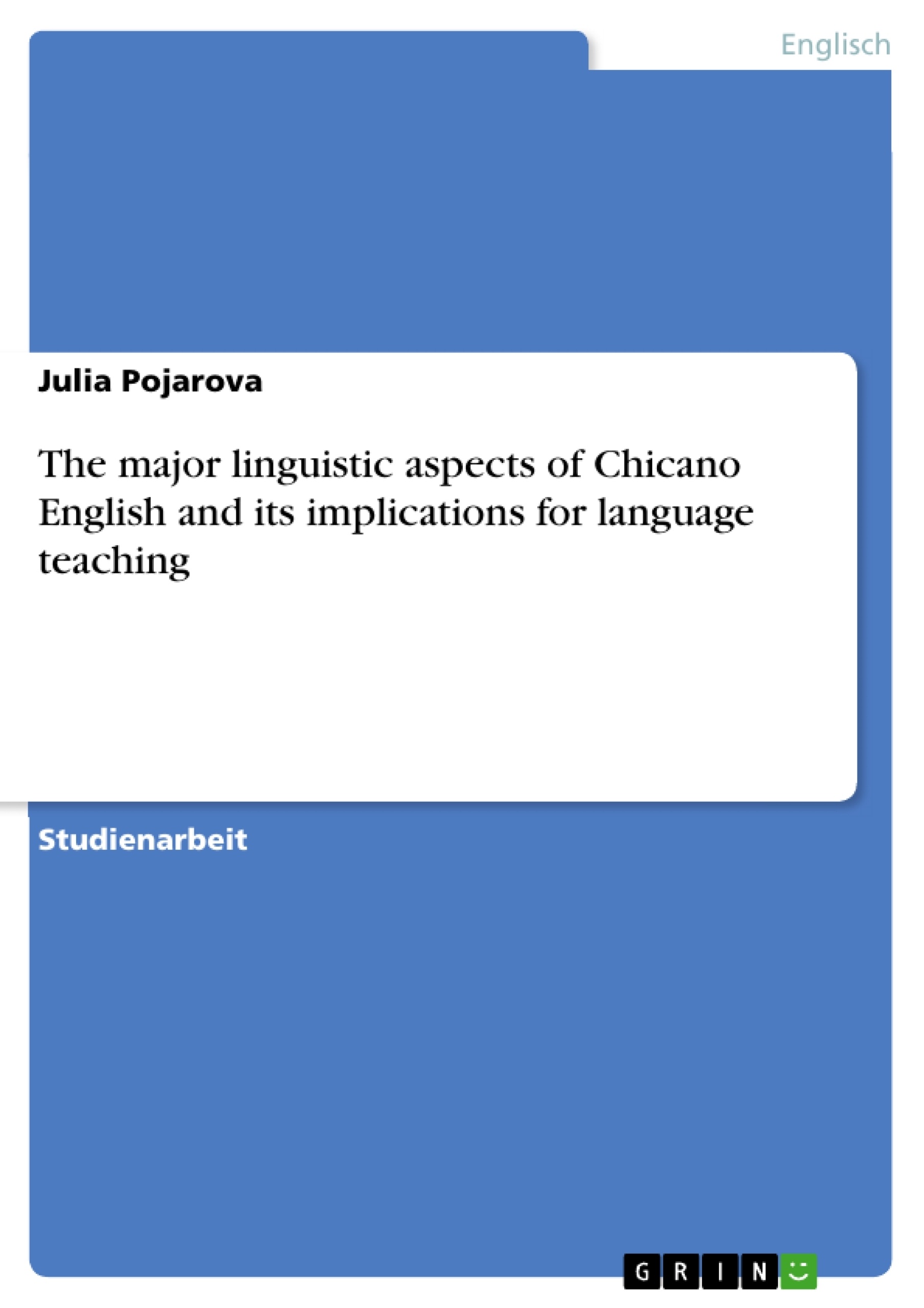The present paper focuses on a particular variety of American English in the Southern and Southwestern States - the Chicano English. First paragraph defines and describes Chicano English. The main part of this paper is divided into two chapters - the first deals with linguistic aspects of ChE, and the second discusses possible ways to integrate the topic “Chicano English” into English lessons in German secondary schools.
The first chapter of the main part provides an overview of the phonology of Chicano English, focusing on its characteristic phonetic features. Next, in the following chapter, syntactic, semantic and pragmatic features of Chicano English are covered.
The second part of this paper explores the possibilities to integrate the topic “Chicano English” into English lessons in German secondary schools, introducing a teaching unit for German Grammar school students in Year 11. Besides, this paragraph discusses the importance and the relevance of this topic for developing student’s awareness of linguistic and cultural diversity of English. The final chapter provides a brief summary of the key points of this paper.
Inhaltsverzeichnis
- Introduction
- Chicano English
- Chicano English - definition
- Phonetic features
- Syntax, Semantics and Pragmatics of ChE
- ChE implications for English language teaching in German secondary schools
- Relevance of ChE in English Language Teaching
- Teaching Unit
- Conclusion
Zielsetzung und Themenschwerpunkte
Diese Arbeit beschäftigt sich mit Chicano English, einer besonderen Varietät des Amerikanischen Englisch, die vor allem im Süden und Südwesten der USA verbreitet ist. Das Ziel dieser Arbeit ist es, die sprachlichen Besonderheiten von Chicano English zu beleuchten und zu zeigen, wie diese Varietät in den Englischunterricht an deutschen Gymnasien integriert werden kann.
- Definition und Beschreibung von Chicano English
- Untersuchung der phonetischen, syntaktischen, semantischen und pragmatischen Merkmale von Chicano English
- Entwicklung einer Unterrichtseinheit für den Englischunterricht an deutschen Gymnasien
- Diskussion der Bedeutung und Relevanz von Chicano English für die Entwicklung des Sprachbewusstseins von Schülern
- Zusammenfassung der wichtigsten Erkenntnisse
Zusammenfassung der Kapitel
Das erste Kapitel bietet eine Einleitung und stellt Chicano English als eigenständiges Phänomen vor. Das zweite Kapitel analysiert die phonetischen Besonderheiten von Chicano English und zeigt die starke Verbindung zu den Merkmalen des Spanischen auf. Das dritte Kapitel beleuchtet die syntaktischen, semantischen und pragmatischen Merkmale von Chicano English. Das vierte Kapitel untersucht die Möglichkeiten zur Integration des Themas "Chicano English" in den Englischunterricht an deutschen Gymnasien und präsentiert eine entsprechende Unterrichtseinheit.
Schlüsselwörter
Chicano English, Amerikanisches Englisch, Sprachkontakt, Phonetik, Syntax, Semantik, Pragmatik, Englischunterricht, Sprachbewusstsein, kulturelle Vielfalt.
- Quote paper
- Julia Pojarova (Author), 2011, The major linguistic aspects of Chicano English and its implications for language teaching, Munich, GRIN Verlag, https://www.grin.com/document/176178



